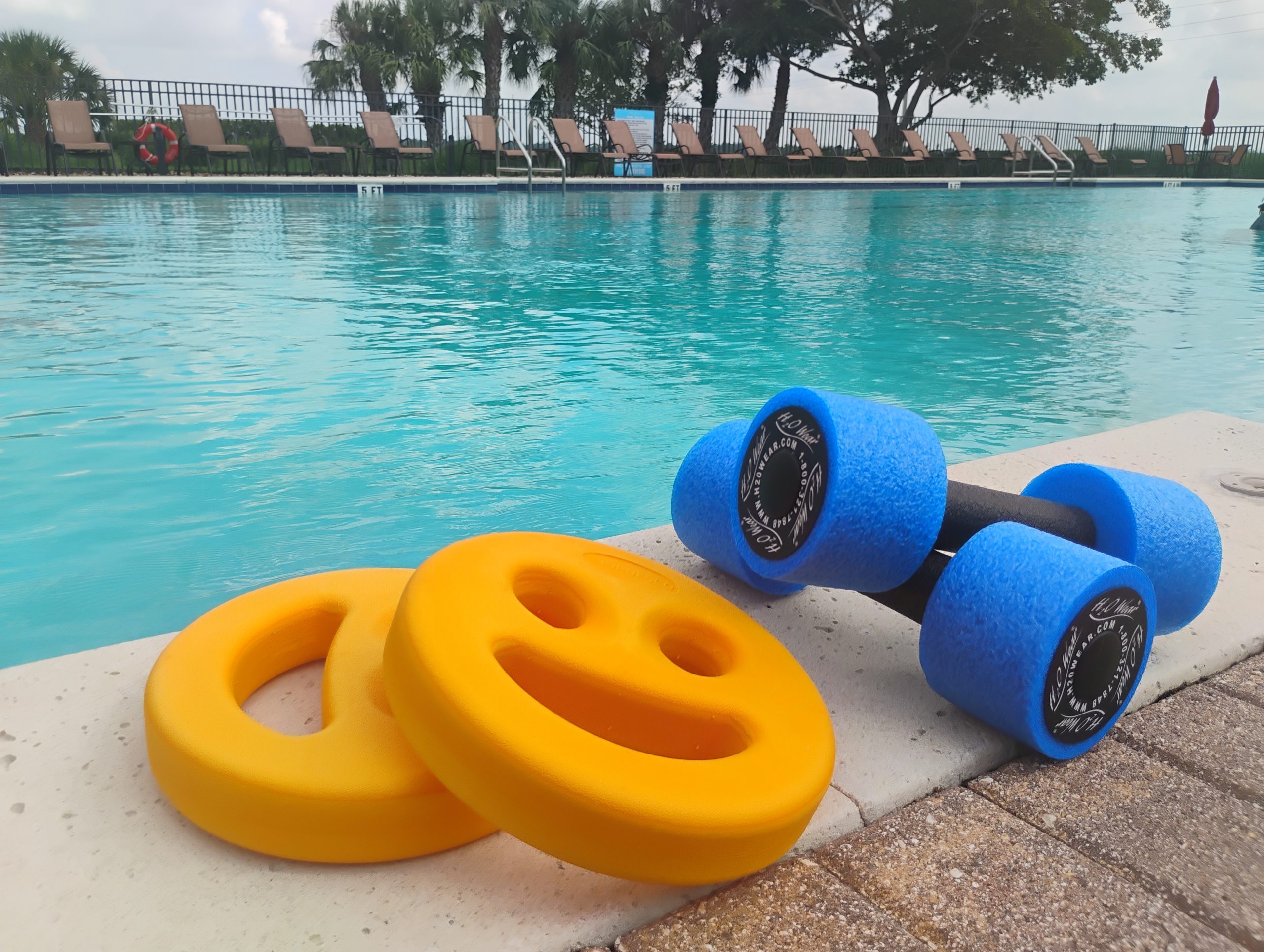When it comes to water exercise, hand buoys—or foam dumbbells—are a staple for many. These popular pieces of equipment can elevate your workout by providing resistance, improving muscle strength, and enhancing your overall fitness. But are you using the right hand buoys for your needs? Let’s explore how to choose the best hand buoys and incorporate them into your water exercise routine.
What is a hand buoy?

Hand buoys are essentially hand weights for the pool. The popular free-weight for water exercise—better known as foam dumbbells, water weights, or hand buoys—commonly resembles dumbbells: bars with foam pieces at each end.
On land, free weights provide a functional training experience that works against gravity, requiring core strength to control the body while moving the weights. In the pool, hand buoys offer these same benefits; independent training of each arm, core stability, and upper body strengthening.
While they may feel lightweight on land, their interaction with water’s buoyancy and drag makes them a valuable training tool. The larger surface area increases resistance, while buoyancy demands more muscular effort to keep both the equipment and shoulders submerged simultaneously. So how do you choose the right resistance?
What hand buoy should I choose?
Hand buoys come in various shapes and sizes, with different foam and grip proportions. Here’s what to look for:
Grip: Choose a cushioned grip that fits comfortably in your hand without needing to clench.
Foam Size: The larger the foam, the greater the resistance. Determine what size matches your current shoulder strength by performing a simple test: Submerge the hand buoys, press your shoulders down, and perform at least 10 repetitions of an arm curl or chest press. If you can keep your shoulders depressed, the hand buoys are suitable. If your shoulders float upward, opt for a smaller size.
Using hand buoys safely
Using hand buoys can significantly strengthen your shoulders and upper body, but it’s crucial to use them correctly to avoid injury. Here’s how:
- Purpose: Identify what you aim to achieve with the hand buoys—cardio, balance, mobility, or strength. Different exercises might require different sizes.
- Exercise type: Use smaller hand buoys for faster cardio exercises like jogging and skis. Reserve larger hand buoys for slower, strength-focused exercises.
- Breaks: Incorporate breaks to avoid overuse and strain from prolonged gripping.
- Proper use: Avoid placing hand buoys under your armpits, as this can cause nerve compression and stress on the neck and shoulders.
Practical exercises with hand buoys
Incorporating hand buoys into your water exercise routine can make your workouts more dynamic and effective. Focus on slow movements to engage the back and shoulder muscles. Here are a few exercises to try:
Lunge-position sequence:
-
- Stir the Water: In a lunge position, move the hand buoys in a circular motion.
- Reverse Row: In the same position, perform a reverse rowing motion, pulling the hand buoys towards your chest, pressing hands to the floor, and slowly raising the arms in front.
- Alternating Reach: Reach one hand buoy towards the pool floor, alternating sides.
The takeaway
Hand buoys are an excellent addition to any water exercise routine, offering resistance training and enhancing muscle strength. By choosing the right hand buoys and using them correctly, you can maximize your workout benefits while staying safe.
Ready to dive into water workouts for your best results? Learn more about Wavemakers here, and join us inside for a supportive, fun, and results-focused way to reach your goals.
